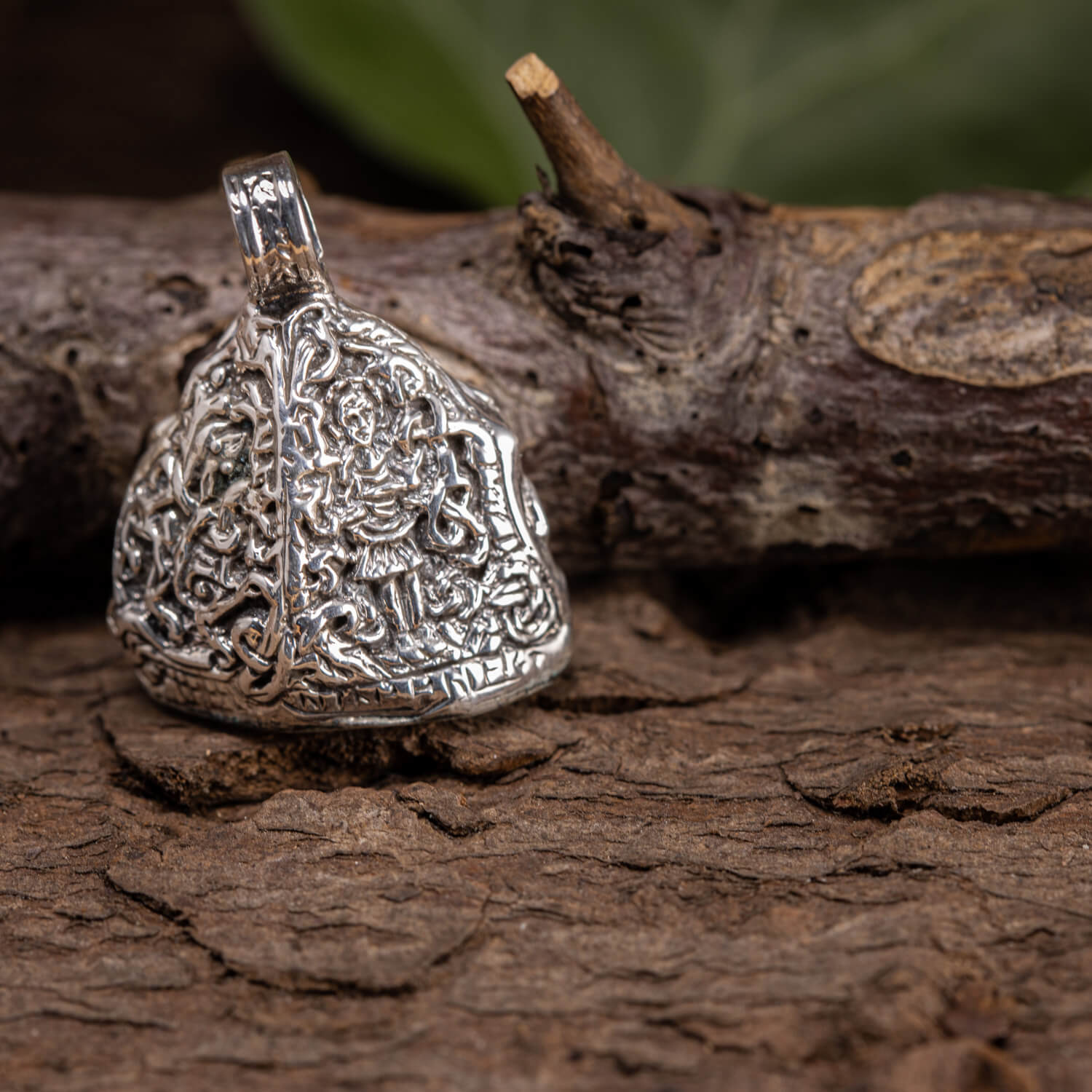The Jelling stone as a pendant, made of genuine 925s Sterling Silver!
Jelling and the story of the 3 Jelling kings are as Danish and Viking as can be, so of course we must also be able to offer the Jelling stone as a necklace.
This is one of our heaviest silver pendants. And if you're into authentic jewellery, it doesn't get much more authentic than this!
The pendant is 2.5cm high and 2.5cm wide. The hole the chain must pass through is 5mm and all chains of 5mm or less therefore fit this pendant.
Below you can read more about Jelling and the Jelling Stone.
It is difficult to determine when the Great Jelling Stone was erected, but it was probably erected between 960 and 985 by Gorm and Thyra's son Harald Blåtand in Jelling in memory of his parents. The stone's inscription also tells about Harald's merits. He united Denmark and made the Danes Christian. The stone consists of three different sides. One side is engraved with runes, the other side consists of a mythical beast, and on the third side of the stone is a crucifixion image of Christ.
The stone is made in the Mammen style, one of the style periods of the late Viking Age. In the carving itself, the stone bears the stamp of Western European influence. In contrast to the traditional Nordic with deep indentations in hard granite, this stone has been free-hewn, so that the dragon sling and the other decoration form a flat relief. It is a technique used for softer sandstone in e.g. Germany and England. The only reliefs in the Nordic style are made of limestone or sandstone. The only direct European parallel is Irish granite crosses. The runic inscription itself is also done according to the Western European tradition, instead of the traditional vertical or band-shaped text, this stone has text in horizontal lines. This follows the Latin form and thereby imitates a document written down on parchment. Preben Meulengracht Sørensen has pointed out that this marks a shift in the way the runestone was used. Traditionally, the purpose of the inscription had been to describe and perpetuate, while this stone had a communicative purpose; it was to tell the king's message. On that basis, Meulegracht-Sørensen has described this stone as one of the oldest relics of the incipient Latin writing culture in the Nordics.
The stone is often referred to as "Denmark's baptismal certificate", and it was also erected with the purpose of proclaiming the king's baptism and thereby establishing Christianity as the country's state religion. The stone marks one of the important phases in the long process that led to the change of religion in the Nordic region. The Christ depicted on the stone does not resemble the suffering figure known a few hundred years later. Here he is depicted as a triumphant king climbing the Tree of Life, i.e. the cross. Thus, it is present even though it is not depicted directly. Christ on the Jelling stone is a St. Helper figure, i.e. a clothed Christ with shoes and gloves on. In Denmark, there is otherwise only one Skt. Helper depicted on the church bell in Kværs from 1422, which came from Kliplev.
Translation of the runes: King Harald ordered to make these kumels after Gorm his father and Thyra his mother - the Harald who conquered all of Denmark and Norway and made the Danes Christians.
- Wikipedia
-
Fast Delivery
We ship almost every day, and 95% of our packages arrive within 2 days.
-
Free Shipping and 30 Day Returns
We have a 30-day full return policy, as well as free delivery on all jewelry and drinking horns.
-

E-marked Website
Extra security for you as a consumer!
-
Danish Customer Service
Showroom in Roskilde and Danish customer service.


